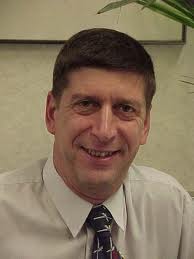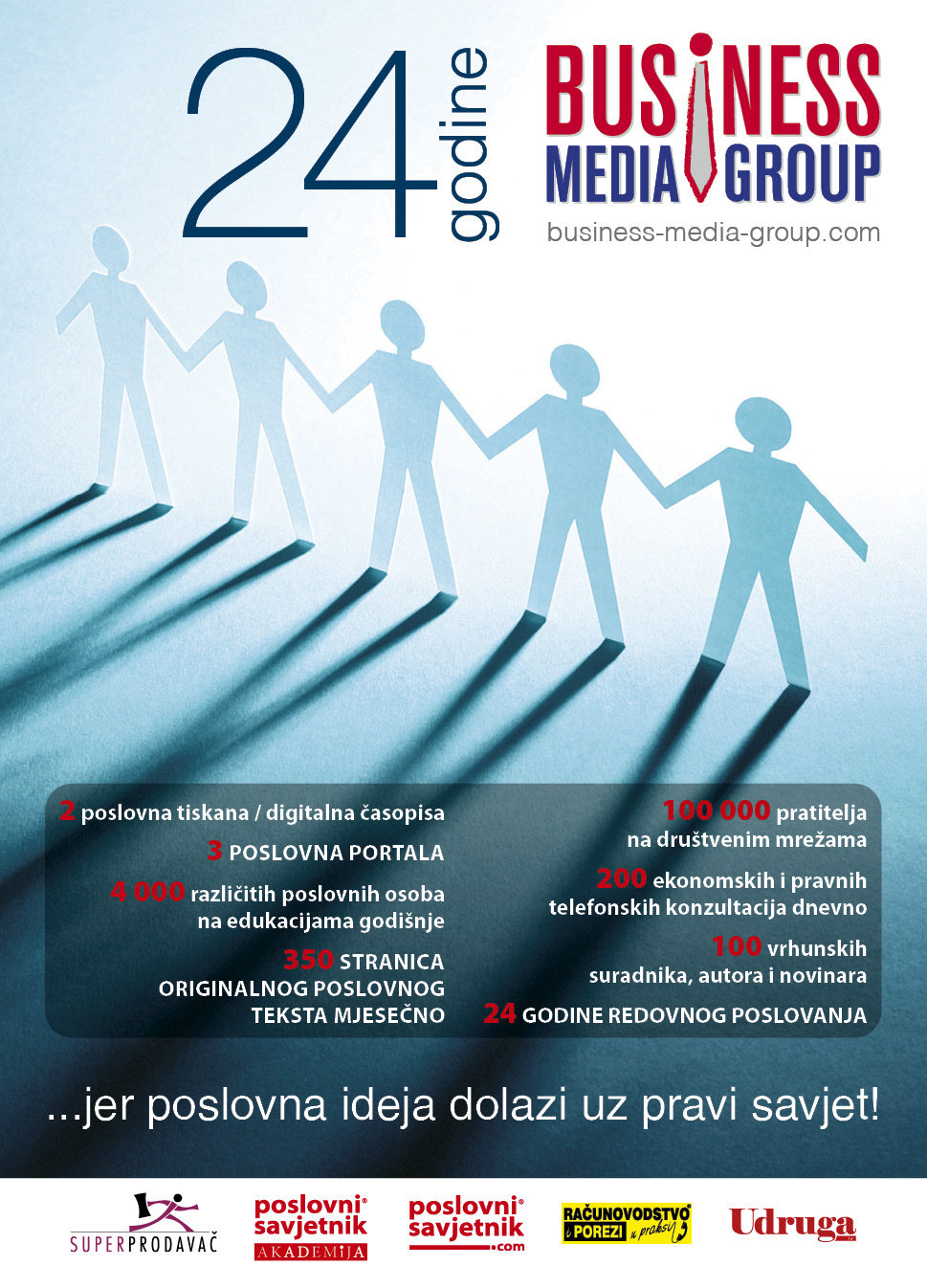John Lodder: Leaders influence 70% of Engagement and Trust in their company, are you in the 30%?

In this column I write about disengagement of employees in Croatian companies and its costs. The Leader is the only one who can improve engagement by effectively using some cultural elements as Communication and Trust Building in the relations with employees. I then use the ‘FLOW-model’ as a leadership tool, to relate the different aspects together and I end with some practical suggestions and tips.
Are we going to a new ‘normal’ in the workplace
Many organizational leaders today are eagerly talking about returning their work back to "normal." Some leaders even think that work will function as it did before the pandemic hit us. It would be nice if life was that simple.
The reality is that during the pandemic the global workforce developed new ideas on the importance of a more effective work-life balance.
Some people could not work at all and had to stay at home, some people worked remotely and increased their quality and productivity and enjoyed this new way of working in a virtual reality. On the other hand, some people working remotely experienced more stress and missed social contacts.
Before the pandemic most companies did not work remote and had some traditional cooperation and communication patterns between their people. Now many companies are planning to keep a hybrid working environment, employees work a few days in the office and a few days at home. This requires a complete other way of leadership, communication and cooperation in your company.
It requires leaders to take a closer look at their Social Capital and their own leadership role. I will explain this in numbers and money.
(Dis-) engagement of employees
A new Gallup analysis found that 48% of America's working population is actively job searching or watching for opportunities to change jobs, it’s an excellent opportunity for employees. US companies are facing a record-high number of unfilled positions and a high quit rate, 3.6 million Americans resigned in June alone and this trend continues.
Some European countries are economically growing fast, and with similar or even higher growth numbers as before the pandemic, they are also struggling with a shortage of employees, with needs for a better work-life balance.
The main reason for people quitting their jobs is that they feel not engaged, not respected, not involved by their managers. Gallup found that workers in all job categories, from customer-facing service roles to highly professional positions, are actively or passively job hunting at roughly the same rate.
Gallup found for the USA that ca. 74% of these job seekers are ‘(Actively) Disengaged’ or ‘Not Engaged’.
The Great Resignation
People are calling this the "Great Resignation" and as the Gallup data show, it's not a sector, a role or a pay issue. It's a workplace issue because the highest quit rate is among not engaged and actively disengaged workers.
Gallup's Global Workplace 2021 Report identified an employee engagement rate of 21% in Eastern European organizations, and only 12% in Croatia.
Putting it differently: 88% of Croatia’s workforce is disengaged and actively disengaged. And disengagement is very expensive! Financially for the organization, psychologically for employees and their families.
How much does disengagement cost a company?
The lost productivity of not engaged and actively disengaged employees is ca.18% of their annual salary.
So, if your average employee would be on the payroll for € 500 a month, your company loses € 1,080 per employee per year. (€ 6,000 x 18%)
For a company with 100 employees and an average salary of € 500 each, disengagement costs your company € 95,040 a year. (100 x 88% x € 1,080)
The average costs of replacing one employee are ca. 175% of the employee's annual salary. (Costs are for replacement processes like hiring, onboarding, learning, coaching, guidance, until the person is productive, administration etc.)
So, keeping one disengaged employee costs € 1,080 a year (18% annual salary) and ca. € 10,500 to replace one not engaged employee. (€ 6,000 x 175%)
From my experience I know that most leaders do not think about costs for disengagement.
But, what happens if you invest € 10,500 to replace one disengaged employee?
Each new hire enters your organization and will soon become part of the less-engaged team; (s)he probably won't stay long. Or stays and becomes also disengaged etc. You can calculate the costs again.
This becomes a self-defeating cycle!
The good news is that disengagement can be interrupted, improved and the most effective interrupter is the leader.
Employee retention strategies demand people management skills
To engage workers, leaders must fulfill some essential elements of engagement.
Those elements range from knowing what is expected at work, to having opportunities to learn and grow.
Because engagement has a reciprocal relationship with wellbeing, engaged employees are healthier, more resilient and better performers. They are also more loyal to the leader, the colleagues and the organization.
Delivering the elements of engagement and wellbeing isn't difficult, but many leaders might need help to do it right.
Training and/or coaching helps leaders how to conduct open and meaningful conversations, to set expectations, to create accountability and individualize performance management to get the best out of the people and so create an employee experience that retains workers. Active listening is an important tool to create an open relationship and trust.
A leader is the best when people barely know he exists. When his work is done, his aim is fulfilled, and his people will say: We did it ourselves! (Lao Tzu)
The more a high ‘EGO’ level manager can let go of its ‘EGO’, the better an effective Leader (s)he will become. (JL)
What are essential elements of engagement?
A USA research (HBR) found that out of 14,500 employees, 85% of the employees think they are not functioning at 100% of what they think they could do. Of them 16% said they are even functioning at less than 50% of what they could do. That is a huge spill of productivity and/or quality and thus of money.
Only 15% of the total said that they functioned at 100% of what they could do.
These employees, functioning at 100% of their abilities, said these are the main reasons:
1. It is clear what is expected of me
2. There are not too many (bureaucratic) rules how the work needs to be done
3. There are no unproductive meetings
4. Thinking in (creative) solutions of employees are stimulated and supported
5. Good performances are acknowledged and rewarded
6. Our Leaders see and acknowledge the feelings of employees
7. Our Leaders understand how their decisions influence employees and help them cope with their emotions
8. We see the goals and meanings of our work and are devoted to our organization.
In the 1990’s the American psychologist Mihaly Csikszentmihalyi did research after ‘optimal happiness, enjoyment and motivation of people’. Based on this he developed his famous ‘Flow model’ in short in this figure:
The Flow-model and how it relates to (dis)engagement in organizations
1. For maximal results every individual needs optimal skills (x-axis) and optimal challenges (y-axis) and they should be perfectly in balance with each other.
2. If the leader gives his/her employee tasks with optimal challenges related to the employee’s optimal skills, the employee will work between the pink lines and is experiencing the ‘flow-feeling’. (S)he is optimal productive on the way to deliver a Peak Performance. If there is good communication and a mutual relation of trust between leader and employee, this employee will be (highly) engaged.
3. The leader’s main task is to communicate regularly with the employee about the optimal fine-tuning, to make sure the employee will continue to perform within the pink lines. And the leader coaches the employee to get to know his/her boundaries so (s)he can grow.
4. The leader has to beware not to demand too much, not to challenge the employee too high for a task for which (s)he does not have the right skills. The employee will then experience stress, anxiety and, if that situation lasts too long it might lead to a burn-out. (which is very costly for employee and company!)
5. On the other hand, the leader has to beware not to give the employee tasks that are too easy, too low for his/her skills. The employee will then experience boredom and, if that situation lasts too long it might lead to disengagement.
6. Finally, if the leader asks too little of the skills AND at the same time offers too easy challenges, the employee will fall in apathy, a state of indifference leading to highly disengagement and non-involvement.
Csikszentmihalyi describes 8 characteristics for ‘getting into flow’
- Complete concentration on the task
- Clarity of goals and reward in mind and immediate feedback
- Transformation of time (speeding up/slowing down)
- The experience is intrinsically rewarding
- Effortlessness and ease
- There is a balance between challenge and skills
- Actions and awareness are merged, losing self-conscious rumination
- There is a feeling of self-control over the task.
It is always the Leader
What the best Leaders do differently is an act of coaching, not one of directing and administrating!
These leaders have a vision about the way the organization fulfills the needs of their employees, be them baby-boomers, millennials or generation Z. If everybody is engaged and motivated, the revenues of the organization will grow.
All the treatments we are taught in business schools and what we get from our HR departments, rating forms etc. are fine, but they don't matter. There is little to no connection between these activities and mental health outcomes (stress and burnout) of our employees, let alone in connections to customers and suppliers.
Instead, leaders have the opportunity to do work that is unexpected, generous and original.
A leaders’ most important asset is Social Capital
Your team, your people have to trust YOU !
If a Great Leader talks about ‘being’ a leader (s)he stresses the importance of the social capital and its trust in leadership.
Great Leaders know and understand what makes their employees thrive, how to connect and build trust:
1. Employees want to work for an organization that they can feel proud of; one that expects a lot from its people and holds everyone to that same high standard
2. They want to work for an organization that provides challenging and meaningful work; one where policies, procedures, and paperwork are never more important than results
3. They want to invest their time in an organization that rewards its people based on performance rather than on arbitrary metrics; one where winning is never at someone’s expenses
4. Employees want to work for an organization that has values and viewpoints compatible with their own; an organization that cares about morals and ethics, one in which doing what’s right is as important as the bottom line
5. Employees want to work for an organization that does what’s in the best interests of its customers, the community, and the world at large, not because it’ll enhance the firm’s reputation or lead to new business, but because it’s the right thing to do
6. Employees recognize that if they spend 30 percent of their life working, they should spend it wisely.
What is the importance of being trusted?
Solid relationships based on trust in your leadership, are what will get you through challenging times.
And for this, you must lead by example.
Distrust is the greatest expense of every leader and organization.
We are living in a culture of extreme distrust: 2020 is like no other year before, it is giving us a tremendous opportunity to rise above the fray and become trustworthy. said David Horsager, CEO and Best-Selling Author of ‘The Trust Edge’. Leaders who build trust with their teams are able to yield the most impactful results.
Horsager explains: “Trust is the core of leadership or people wouldn’t follow you. The reason I buy from you is trust. Everything of value is built on trust.˝
Now: Please take just one minute to think about ‘Trust’ in your private life.
How important is Trust for you in relation to your parents, partner, children, friends, neighbors etc.?
Trust includes consistency
Integrity and character are not enough. Trust is a confident belief in a person, product or organization.
It’s about safety including consistency. (if you’re coming too late all the time, I trust you’re late).
Trust is the leading indicator for creativity, performance, and revenue.
Lack of trust causes lack of collaboration, creativity, motivation and increases costs, problems, and stress.”
His research “Trust outlook” of 2020 shows that the #1 reason people want to work in an organization is trusted leadership. “People work harder if they can trust their senior leadership. They would trust them more if they would be honest about their mistakes.”
Horsager suggests that leaders seem to have an ‘impostor syndrome’: if they fear they aren’t good enough it’s harder to admit mistakes.
But being a human being includes making mistakes. Being transparent about mistakes might raise team results.
How open are you about your mistakes, your doubts, what you don’t know? And, can you say sorry?
Horsager worked for instance with a board of a large corporation who didn’t like each other. He asked: What is a lack of trust costing your team? They estimated the cost on half a billion dollar. When they dug into the issues, the cost was even more.
Do you recognize the ‘Great Resignation’ I mentioned before.
Positive pillars
Horsager works with 8 pillars of Trust: you could scan your organization, your team, yourself on these 8 pillars?
1. Clarity
Complexity and ambiguity often cause distrust. So, check: is there clarity of vision, expectations, of goals?
Short and actionable is better than lengthy and hyper-complete.
1. Compassion
We trust those who care beyond themselves. That’s why we trust our moms. In organizations we can show compassion by giving appreciation. Do you do that enough?
2. Character
We trust you if you do what is right over what is easy. Do you? What are your examples?
3. Competency
You need to be sure that this person can do the task and is on top of the job.
Do you stay fresh and relevant and become better? Are you still learning and improving?
1. Commitment
Do you stay committed even in the face of adversity? We trust those who are truly committed.
2. Connection
How is your ability to connect and collaborate? Connecting on mistakes works great to build trust: it shows you are authentic and real. Silos and selfishness are the opposite of connection; they hinder collaboration.
3. Contribution
Do you deliver what you promised? Do I get the results, performance, outcomes I expected?
This influences the bottom line. Are we contributing enough?
4. Consistency
Sameness is trusted. Just be predictable and let me know what to expect, and I will trust you.
These 8 pillars all work together to develop organizational trust. Whatever is the problem, it’s never only a communication issue or only lack of employee engagement. Most of these issues are secondary to trust.
The king of trust might be consistency. Little things done consistently, make the difference.
It drives big results. Imagine what would happen if you showed consistent compassion and not just once a year.
Trust is built on consistent How’s
In every interaction you increase or decrease trusts, just like you sustain or challenge the culture in every interaction.
For instance, you want a better organizational culture: Great!
1. How? We’ll add more clarity.
2. How? We need to communicate more.
3. How? How are you going to do that?
4. Keep asking HOW? until you know what you can do right now or tomorrow and that it is clear and visible.
5. The final HOW must include: What, Who, When, and Where.
These 8 pillars are also building blocks for a positive, productive culture where people and performance thrive. Checking your trust factor is an important step in developing your culture.
1. Look at the 8 pillars and self-assess: What do we do well?
2. What could we improve?
3. How open are you about your mistakes, your doubts, what you don’t know?
4. Can you say sorry?
5. Ultimately: Can you exchange these 8 pillars in your team?
It is always the Leader
Your challenge as a great leader is to have a bold vision and to be bold to realize that vision!
How could you improve disengagement in your organization? (Or any other serious issue in your organization?)
Be Bold and announce a change in the actual practice of Leadership within your organization!
Define the change to your leaders exactly this way:
As Leaders we are going to lead through a habit of having one meaningful coaching conversation per week with each team member.
This one coaching conversation per week can be in person, on the phone, email, Zoom, at coffee or standing in the hallway.
(This is a highly researched finding and if you apply it, it will immediately change your culture in a very positive way)
You will certainly get questions, for instance a conversation like this could come up:
You: ˝We are going to lead through a habit of having one meaningful coaching conversation per week with each team member.˝
Leader or Team Leader: "We love it…but what should the conversation be about?"
Your answer is simple: "About our goals. The conversation is about progress on goals and winning with customers.˝
They will then say: "I have never been trained to coach nor maximize the potential of an individual let alone a team, how exactly do I do that?"
Tell them this: "We are going to teach you to develop your people, just like a winning coach develops a great player and team in any sport, by maximizing their strengths and minimizing their weaknesses."
This so resonates with people that it feels like common sense.
Everybody's life will change -- including yours. Your people will win more at work and in life. Your customers will too.
This is a CEO-led transformation. You are the Head Coach.
Job satisfaction is driven by five factors:
1. Task significance: Does the work you do create meaning or impact?
2. Task identity: Do you feel ownership (emotionally) in the work you’re doing?
3. Autonomy: Do you have the freedom to make choices?
4. Skill variety: Is the task monotonous?
5. Feedback: Are you in a place where you can safely and easily get feedback and use it to improve?
If you think about your own moments of flow, or the past times you had a great job done, or hobbies you choose, they have all or most of these elements.
And if you think about the most boring day you’ve ever had, or the worst job you had to do, I bet that most were missing.
And yet, even though it’s easy to show that these five factors are critical in attracting and keeping skilled and talented workers, too many organizations work overtime to eliminate them with bureaucracy.
How often do we hear in private conversations: “I’m just doing my job”? Way too often!
And this is precisely the antithesis of what works for workers!
It is always the Leader/Coach
As a leader/coach you can think of many (open!) questions that relate to these 5 basic factors.
Regular coaching conversations that use five areas of inquiry are another way to help employees explore their inner purpose. The Leader/coach could ask: (and then dive deeper into the conversation by active listening)
1. What are you good at doing? Which work activities require less effort? What do you take on because you believe you’re the best person to do it? What have you gotten noticed for throughout your career?
The idea here is to help people identify their strengths and open possibilities from there.
2. What do you enjoy? In a typical workweek, what do you look forward to doing? What do you see on your calendar that energizes you? If you could design your job with no restrictions, how would you spend your time?
These questions help people find or rediscover what they love about work.
3. What feels most useful? Which work outcomes make you most proud? Which of your tasks are most critical to the team or organization? What are the highest priorities for your life and how does your work fit in?
This line of inquiry highlights the inherent value of certain work.
4. What creates a sense of forward momentum? What are you learning that you’ll use in the future? What do you envision for yourself next? How’s your work today getting you closer to what you want for yourself?
The goal here is to show how today work helps them advance toward future goals.
5. How do you relate to others? Which working partnerships are best for you? What would an office of your favorite people look like? How does your work enhance your family and social connections?
These questions encourage people to think about and foster relationships that make work more meaningful.
If your relation with your employee is open and there is mutual trust, you will see that a weekly, meaningful coaching conversation is also boosting your own energy and Flow.
For this column I was inspired by Prof. Dr. Mihaly Csikszentmihalyi, Gallup, Harvard Business Review (HBR), Kristi Hedges MsC, Dr. David Horsager. Dr. Vince Molinaro, Dr. Frank Sonnenberg.
(ps/sm)


























